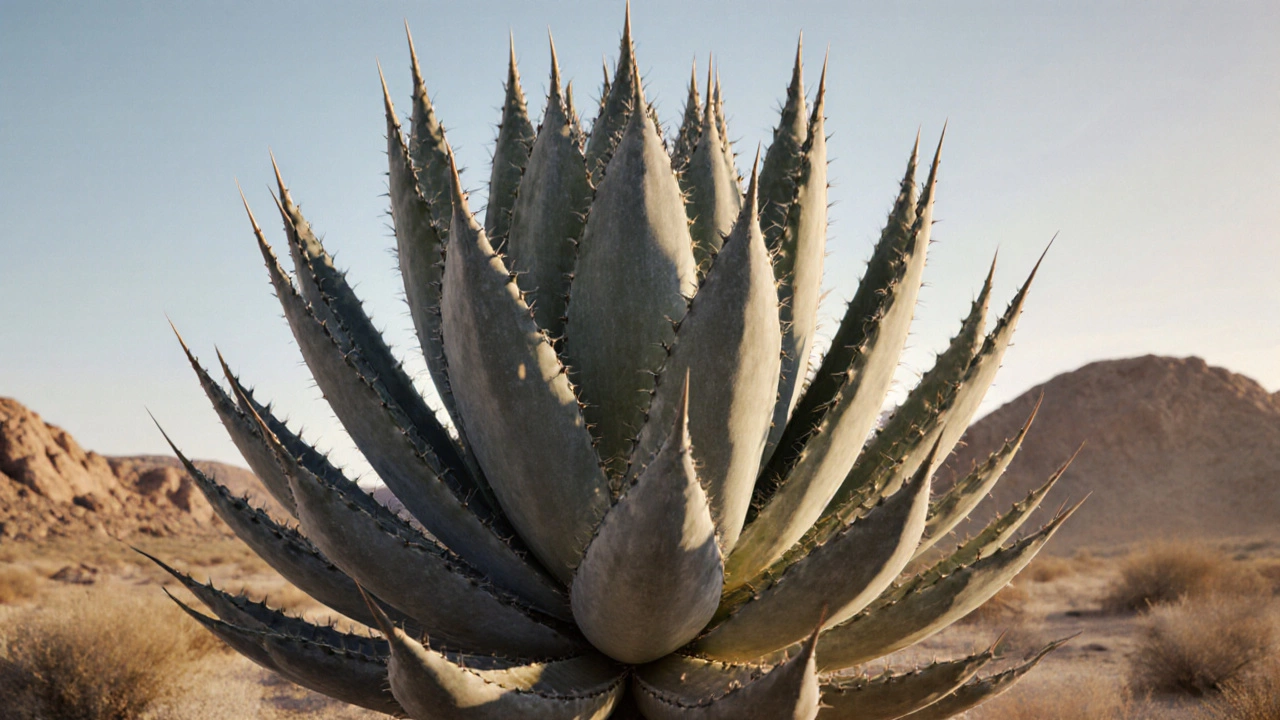Discover why Agave americana, the century plant, waits 30‑40 years to bloom, how it grows, what happens during its massive flower event, and how to care for it.
Agave americana: The Tough, Beautiful Plant That Thrives in Indian Gardens
When you think of plants that survive heat, drought, and neglect, Agave americana, a large, spiky succulent native to Mexico but now common across India’s dry regions. Also known as century plant, it doesn’t bloom once a century—but it does last for decades with almost no water, making it one of the most reliable plants for Indian balconies, terraces, and backyard gardens. Unlike tropical flowers that need daily watering, Agave americana stores water in its thick, blue-green leaves and thrives where other plants wilt. It’s not just tough—it’s striking. Its dramatic shape and sharp, architectural lines make it a favorite for modern gardens and low-maintenance landscapes.
Agave americana is part of a larger group of plants called succulents, plants that store water in their leaves, stems, or roots to survive dry conditions. In India, where summers are long and rains unpredictable, succulents like Agave, aloe, and echeveria have become go-to choices for gardeners tired of constant watering. What makes Agave americana stand out is its size—it can grow over 6 feet wide—and its ability to handle full sun, poor soil, and even coastal salt spray. It doesn’t need compost-rich beds or fancy fertilizers. In fact, too much water or rich soil can kill it. It’s the opposite of high-maintenance flowers like hydrangeas, which need shade and constant moisture. Agave americana is the plant you plant and forget—until it blooms, sometimes after 10 to 30 years, sending up a towering flower spike that’s a spectacle in itself.
People often confuse Agave americana with cacti, but they’re not the same. Cacti have spines that grow from areoles; Agave has sharp leaf tips that are part of the leaf itself. It also doesn’t need the gritty, sandy soil that cacti prefer. In India, it grows well in regular garden soil as long as it drains fast. That’s why it’s perfect for terrace gardens, where drainage is a problem, or for rocky, uneven patches where grass won’t grow. It’s also a natural deterrent for pests and animals—few critters want to climb through those spikes. If you’ve ever struggled with rabbits eating zinnias or deer browsing your flowers, Agave americana might be your silent guardian.
It’s not just about looks or toughness. Agave americana connects to bigger ideas in sustainable gardening—reducing water use, avoiding chemical fertilizers, and choosing plants that work with your climate instead of against it. It fits right into the trend of eco-friendly gardening, practices that conserve resources and support local ecosystems, which you’ll find echoed in posts about composting, drip irrigation, and native plants. You won’t find it in every Indian garden yet, but more people are starting to see its value. Whether you’re new to gardening or have been growing plants for years, Agave americana offers a simple, powerful solution: beauty that doesn’t beg for attention, but earns it by surviving when everything else fails.
Below, you’ll find real-world guides from gardeners who’ve grown Agave americana in Indian conditions—how to plant it, what to avoid, and how to pair it with other drought-tolerant plants. No fluff. Just what works.
